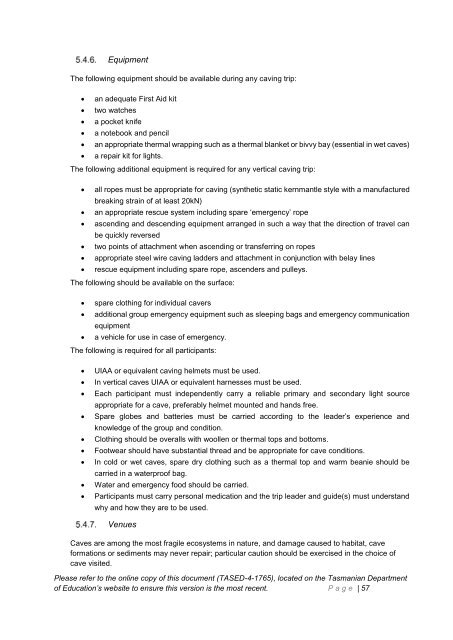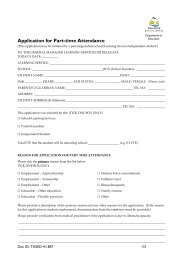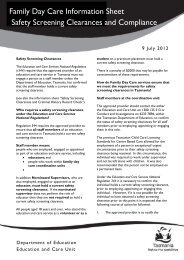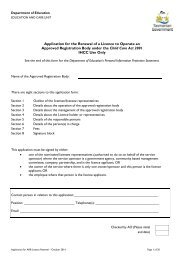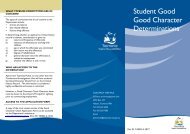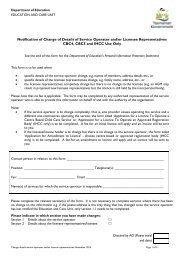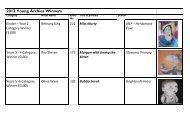PLANNING OFF CAMPUS ACTIVITIES
Procedures for Planning Off Campus Activities - Department of ...
Procedures for Planning Off Campus Activities - Department of ...
- No tags were found...
Create successful ePaper yourself
Turn your PDF publications into a flip-book with our unique Google optimized e-Paper software.
Equipment<br />
The following equipment should be available during any caving trip:<br />
an adequate First Aid kit<br />
two watches<br />
a pocket knife<br />
a notebook and pencil<br />
an appropriate thermal wrapping such as a thermal blanket or bivvy bay (essential in wet caves)<br />
a repair kit for lights.<br />
The following additional equipment is required for any vertical caving trip:<br />
all ropes must be appropriate for caving (synthetic static kernmantle style with a manufactured<br />
breaking strain of at least 20kN)<br />
an appropriate rescue system including spare ‘emergency’ rope<br />
ascending and descending equipment arranged in such a way that the direction of travel can<br />
be quickly reversed<br />
two points of attachment when ascending or transferring on ropes<br />
appropriate steel wire caving ladders and attachment in conjunction with belay lines<br />
rescue equipment including spare rope, ascenders and pulleys.<br />
The following should be available on the surface:<br />
spare clothing for individual cavers<br />
additional group emergency equipment such as sleeping bags and emergency communication<br />
equipment<br />
a vehicle for use in case of emergency.<br />
The following is required for all participants:<br />
<br />
<br />
<br />
<br />
<br />
<br />
<br />
<br />
<br />
UIAA or equivalent caving helmets must be used.<br />
In vertical caves UIAA or equivalent harnesses must be used.<br />
Each participant must independently carry a reliable primary and secondary light source<br />
appropriate for a cave, preferably helmet mounted and hands free.<br />
Spare globes and batteries must be carried according to the leader’s experience and<br />
knowledge of the group and condition.<br />
Clothing should be overalls with woollen or thermal tops and bottoms.<br />
Footwear should have substantial thread and be appropriate for cave conditions.<br />
In cold or wet caves, spare dry clothing such as a thermal top and warm beanie should be<br />
carried in a waterproof bag.<br />
Water and emergency food should be carried.<br />
Participants must carry personal medication and the trip leader and guide(s) must understand<br />
why and how they are to be used.<br />
Venues<br />
Caves are among the most fragile ecosystems in nature, and damage caused to habitat, cave<br />
formations or sediments may never repair; particular caution should be exercised in the choice of<br />
cave visited.<br />
Please refer to the online copy of this document (TASED-4-1765), located on the Tasmanian Department<br />
of Education’s website to ensure this version is the most recent. P a g e | 57


